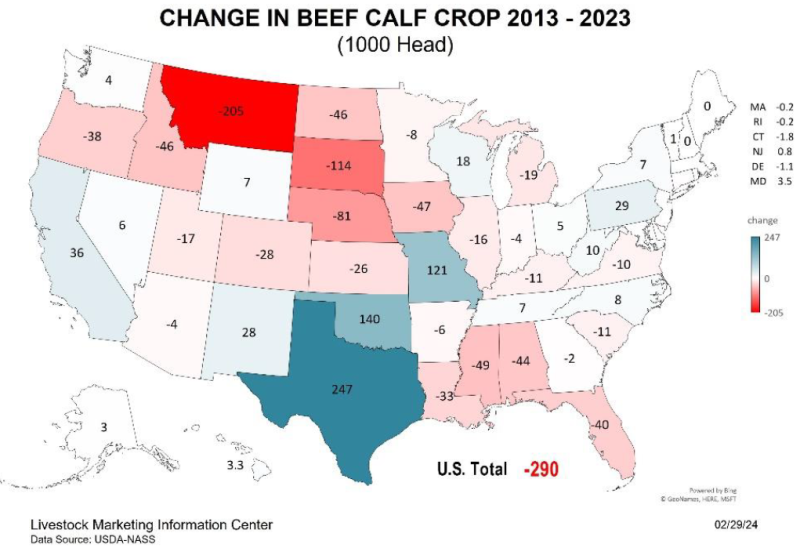 At the time of writing this, shipping season is underway, and calf prices are still more than favorable for cow-calf producers selling weaned calves. We are seeing some seasonality effects as prices have leveled off going into the fall. Fall is the time when most producers are selling calves, so more short-term supply is going to influence prices . However, prices for 450-500-pound steers calves in Florida averaged at $267/cwt in August, 5% higher than August 2023, and 57% higher than August 2022. Prices for 450-500-pound heifers in Florida averaged at $247/cwt, also roughly 5% higher than August 2023, and 65% higher than August 2022. Prices will be expected to follow the seasonality trend of increasing going into the spring. They will also be expected to rise due to current cattle inventory levels being the lowest since the 1950s.
At the time of writing this, shipping season is underway, and calf prices are still more than favorable for cow-calf producers selling weaned calves. We are seeing some seasonality effects as prices have leveled off going into the fall. Fall is the time when most producers are selling calves, so more short-term supply is going to influence prices . However, prices for 450-500-pound steers calves in Florida averaged at $267/cwt in August, 5% higher than August 2023, and 57% higher than August 2022. Prices for 450-500-pound heifers in Florida averaged at $247/cwt, also roughly 5% higher than August 2023, and 65% higher than August 2022. Prices will be expected to follow the seasonality trend of increasing going into the spring. They will also be expected to rise due to current cattle inventory levels being the lowest since the 1950s.
Going into 2024, the 2023 total calf crop (includes beef, dairy, and beef-on-dairy) in the United States totaled 33.5 million head. The beef calf crop totaled 25.3 million head. Since 2013, the beef calf crop has declined by 290,000 head nationwide and, more specifically, by 40,000 head in Florida (Map 1 right). The total calf crop has declined by 37,000 head nationwide and by 60,000 head in Florida.
 Going into 2025, the current 2024 total calf crop projection is 33.1 million head, which will be the smallest calf crop in over 80 years and will have declined by 3 million head since the last inventory peak in 2018. This decline in the calf crop will affect the number of feeder cattle available to go into feedlots the next year. The current supply of feeder cattle outside of feedlots is 24.2 million, the lowest in 53 years (Map 2 right). While the number of cattle on feed month to month in 2024 has appeared to remain steady (due to feedlots strategizing and increasing the number of days cattle are on feed), the total number of cattle that have entered in feedlots from January until the end of July is down 2% percent compared to last year. So, even though feedlots are maintaining capacities now, feeder cattle supplies are expected to tighten even more going into 2025.
Going into 2025, the current 2024 total calf crop projection is 33.1 million head, which will be the smallest calf crop in over 80 years and will have declined by 3 million head since the last inventory peak in 2018. This decline in the calf crop will affect the number of feeder cattle available to go into feedlots the next year. The current supply of feeder cattle outside of feedlots is 24.2 million, the lowest in 53 years (Map 2 right). While the number of cattle on feed month to month in 2024 has appeared to remain steady (due to feedlots strategizing and increasing the number of days cattle are on feed), the total number of cattle that have entered in feedlots from January until the end of July is down 2% percent compared to last year. So, even though feedlots are maintaining capacities now, feeder cattle supplies are expected to tighten even more going into 2025.
–
Questions, contact Hannah at h.baker@ufl.edu
See this update and other helpful resources online at https://rcrec-ona.ifas.ufl.edu/about/directory/staff/hannah-baker/
- The Economic Influence of Intentional Management of Your Cow Herd - December 19, 2025
- December 2025 Florida Cattle Market Update - December 19, 2025
- October 2025 Florida Cattle Market Update - November 7, 2025

